Mice are small, furry creatures that are found all over the world. They belong to the family Muridae, which also includes rats pet mice and other rodents.
Mice are known for their high reproductive rates, with some species able to give birth to a litter of up to 14 pups at once. In this article, we will explore the behavior of mice in detail and why it is important to understand them.
Brief History of Mice and Their Importance in Research
Mice have been used in research for over a century, starting with genetics experiments by Thomas Hunt Morgan in the early 1900s. Since then, they have been used in many other areas of research due to their fast reproduction rate, low cost, and genetic similarity to humans. One famous example is the discovery of insulin by Frederick Banting and Charles Best in 1921.
They conducted experiments on diabetic dogs but quickly realized that it would be more efficient if they used mice instead. This led to the successful isolation and purification of insulin from mice pancreases.
Today, mice are still widely used in research for everything from drug testing to behavioral studies. Their importance cannot be overstated as they provide valuable insight into many aspects of human health and behavior.
A Glimpse into Mouse Behavior
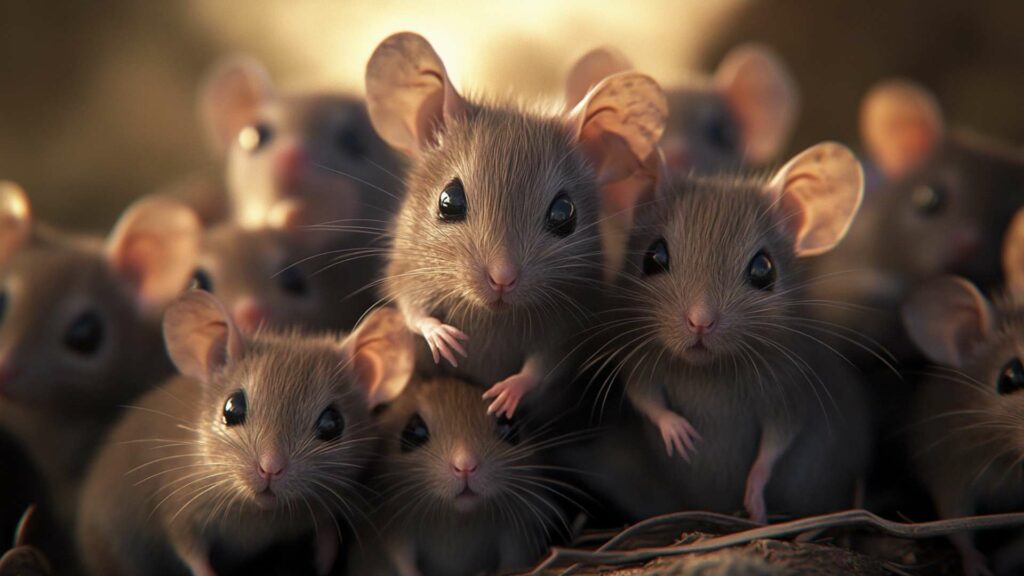
Mice have a variety of behaviors that they use in their day-to-day lives. They have an excellent sense of hearing and smell, which they use to detect predators and find food.
They are also very agile climbers and can run at high speeds when they need to escape danger. When it comes to social behavior, mice live in groups called colonies or packs.
These groups usually consist of one male mouse and several females along with their offspring. Within these colonies, there is a well-defined social hierarchy where males dominate over females.
Delve deeper into the captivating realm of mice behavior and characteristics. Our extensive exploration takes you on an eye-opening journey through their unique traits and actions. Uncover the secrets of mice by immersing yourself in our thought-provoking article: Uncovering The Secrets Of Mice: Exploring Behavior And Characteristics
The Importance of Understanding Mouse Behavior
Understanding mouse behavior is crucial for several reasons. Firstly, mice play an essential role in many ecosystems as prey for larger animals such as snakes, birds of prey, etc., so studying their behavior can help better understand the dynamics within these ecosystems.
Secondly, mice are often used as laboratory animals in scientific experiments due to their genetic similarity with humans. Therefore understanding their natural behavior can help create more accurate experimental models.
Since mice often inhabit our homes and buildings alongside us humans – sometimes even acting as pests – understanding their habits can help us prevent any potential issues from arising. We should appreciate the fascinating world that lies beyond human life by exploring more about our little friends – the mice!
Physical Characteristics of Mice
Size and weight
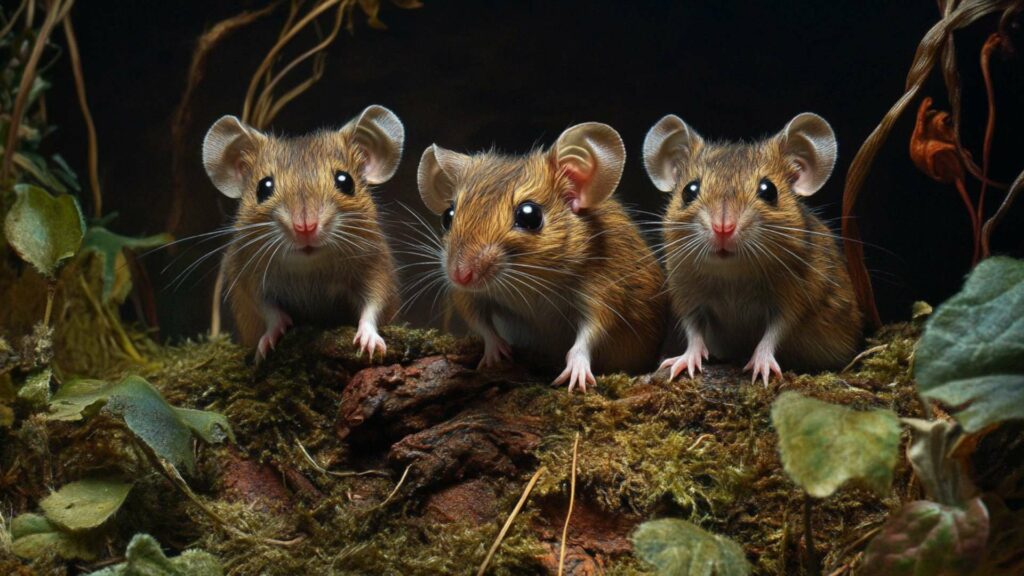
Mice are small, with an average length of about 3 – 4 inches (not including the tail) and a weight of around half an ounce. Females tend to be slightly smaller than males. Their small size allows the rest of them to easily hide in tight spaces and escape from predators.
Body structure and features
Mice have a distinct body shape with a pointed snout, large ears, and long tail. Their fur can range from brown to gray and may have patterns or stripes.
They have sharp claws on hind legs that allow them to climb surfaces like walls, trees, or furniture. Their whiskers are important for sensing their environment since mice have poor eyesight.
Senses and perception
Mice rely heavily on their senses of smell, touch, taste, hearing, and limited eyesight to navigate their surroundings. They use their sense of smell to communicate with each other through pheromones left behind in urine or feces. Their whiskers and ears help them detect changes in air currents, which they use to navigate through tight spaces like burrows or other enclosed areas.
Their sense of taste is used to distinguish between different types of food while hearing is essential for detecting predators or identifying the sounds made by other mice. Overall, understanding the physical characteristics of mice is crucial for gaining insight into their behavior because it affects how they interact with other items in their environment as well as how they communicate with other mice.
Social Behavior of Mice

Mice are social animals and have a complex hierarchy within their colonies. They rely on social interactions to survive and thrive, including communication mutual grooming, and nesting habits. Here we will discuss the communication methods, social hierarchy, and nesting habits of mice.
Communication Methods
Mice communicate with each other through various methods such as vocalizations, pheromones, and body language. They produce high-frequency vocalizations that are inaudible to the human ear but can be heard by other mice.
Pheromones are chemical signals used by mice to mark their territory or communicate their reproductive status. Body language is another way mice communicate with each other.
For example, when a mouse feels nervous or threatened, it may flatten its ears against its head to show submission or fear. Additionally, when a mouse is happy or excited, it may jump around or wiggle its tail.
Types of Communication
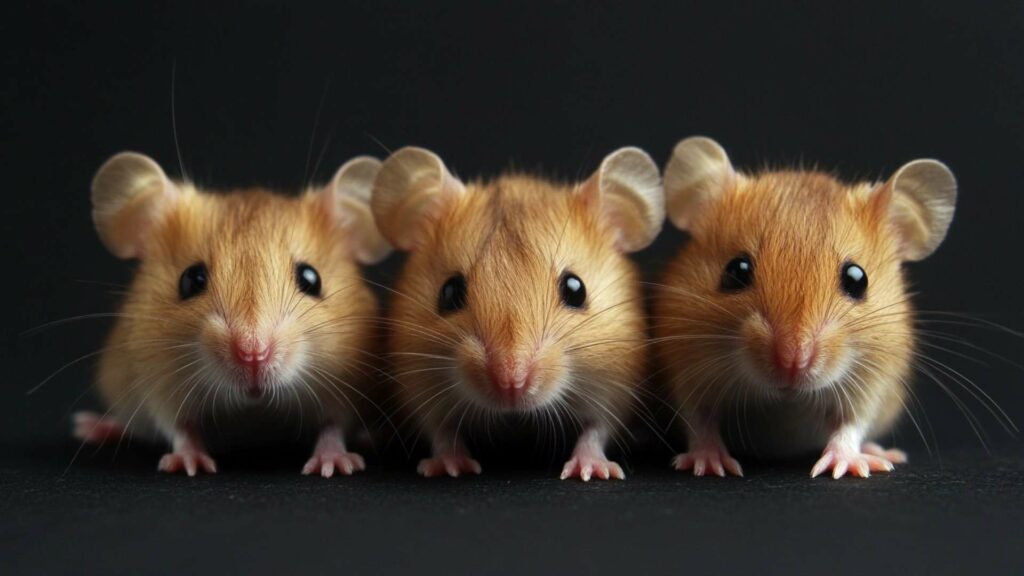
Vocalizations are one way mice communicate with each other. These sounds can range from high-pitched squeaks to low-frequency calls that are mostly inaudible to humans. Mice use vocalizations to warn others of danger or to signal aggression when they feel threatened.
Depending on the context and tone of the sound, vocalizations can convey a variety of messages such as fear, stress or excitement. Scent marking is another important way mice communicate with each other.
Mice have scent glands located throughout their bodies, which they use to mark territories and attract mates. Scent marking involves leaving trails of urine or feces in certain areas that will send signals about an individual’s presence or intentions.
Body language is a critical aspect of mouse communication used in establishing dominance hierarchies and settling disputes between individuals. For example, when two males encounter each other for the first time in their territory they may display aggressive behavior like gaping their mouths wide open or puffing out their fur.
Examples of Communication in Different Contexts
Territoriality is a crucial aspect of mouse behavior as competition over limited resources and other items like food can drive aggression between mice living in adjacent areas. To establish a territory mice will often leave scent marks along boundaries warning off potential intruders which is also known as territorial marking.
Mating is another context where mice actively communicate with each other using scent marking and vocalizations; males will produce high-pitched sounds, while females emit ultrasonic vocalizations to signal that they are ready to mate. Social hierarchy is another important element of mouse behavior.
Dominant individuals use aggressive displays like tail rattling, body posturing and vocalizations to assert their authority over other mice in the community. Mice use a variety of communication methods such as vocalizations, scent marking and body language to convey messages.
These communications play important roles in establishing social hierarchies, mating, mutual grooming rituals and territorial boundaries. As researchers continue to mine other materials and study mouse behavior we can gain further insight into how these small creatures work together as a community.
Mouse Social Behavior
Group Dynamics: Dominance Hierarchy
Just like in any social group, whether it’s in humans or animals, mice have a social hierarchy. This means that some mice are more dominant than others. The dominant mice usually get first dibs on food and shelter, and they also have priority when it comes to mating.
Lower-ranking mice may need to wait their turn or find other ways to get what they need. Dominance between male and female mouse mice can be particularly intense.
When two male mice meet for the first time, they engage in a form of fighting called “boxing,” where they stand on their hind legs and slap at each other with their front paws. Eventually, one mouse will concede and back down, acknowledging the other as the more dominant mouse.
Group Dynamics: Social Grooming
Mice also engage in social grooming behaviors as a way to bond with other members of their group. Social grooming involves one mouse cleaning another mouse’s fur using its tongue. This mutual grooming not only helps keep the other mouse clean but also promotes closeness between individuals.
Interestingly, female mice tend to do more social grooming than male mice do. This could be because female mice are typically more social than male mice are.
Effects of Isolation on Behavior
Mice are social animals by nature and being isolated can have negative effects on their behavior. Studies have shown that isolated male mice are more likely to exhibit aggressive behavior towards other males when reintroduced into a group setting. Isolated female mice may show increased signs of anxiety and depression-like behavior compared to those living in groups.
Additionally, both male and female isolated mice tend to have decreased spatial learning abilities compared to socially housed counterparts. It’s important for researchers studying mouse behavior to consider these effects of isolation when interpreting results from studies conducted on isolated individuals versus group-housed individuals.
Social Hierarchy
Mice establish a social hierarchy through dominance interactions where one house mouse asserts itself over another. The dominant house mouse often has priority access to food and shelter resources while the subordinate must wait until the dominant has had its fill.
The social hierarchy among mice changes frequently due to death or natural processes such as aging or disease. When there is a change in the colony’s hierarchy, there may be an increase in aggressive behavior within the group as new members challenge existing ones for dominance positions.
Nesting Habits
Mice are known for their intricate nest-building skills. They construct nests out of soft materials such as grasses and shredded paper which they collect from their environment. Nesting behavior varies depending on species but generally occurs in secluded areas where they can stay safe from predators.
Female mice typically play the primary role in nesting behaviors since they must provide shelter for their young after giving birth. They will create nests that are close to food sources to prevent leaving their young for too long, which could attract predators.
Understanding the social behavior of mice is crucial to understanding how they interact with each other and their environment. It is also important in breeding colonies for research purposes or maintaining a healthy population in pet mice.
Feeding Habits of Mice
Types of Food They Eat
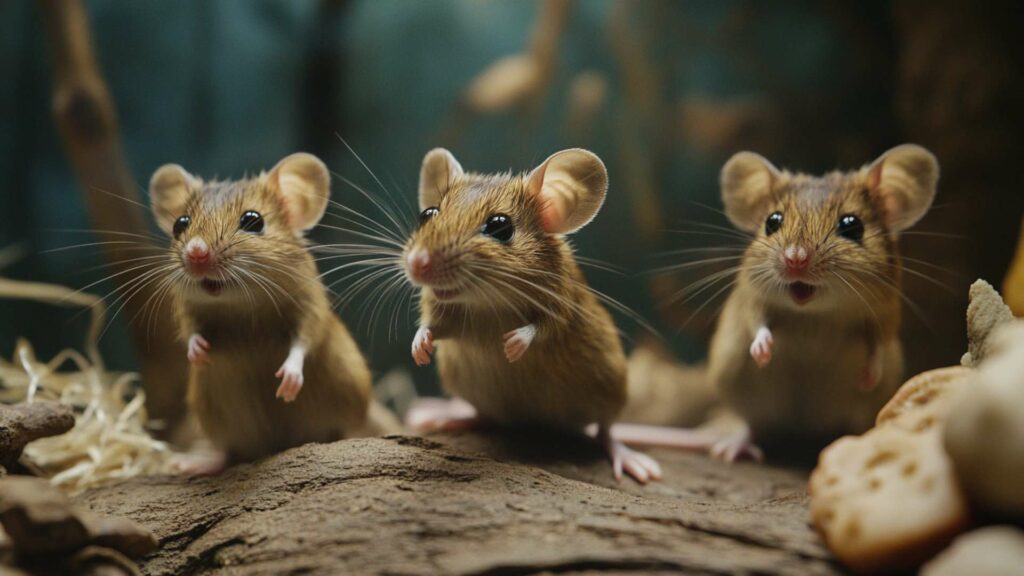
Mice and rats are omnivores, which means they eat both plant and animal matter. Their diet varies depending on their environment, but typically includes grains, seeds, fruits, insects, and small animals like insects and worms.
In the wild, mice have been known to eat anything from nuts and berries to bird eggs and even other mice. One interesting fact about mice is that they have an extremely high metabolism.
They can consume up to 15% of their body weight in food every day just to maintain their energy levels. This is why you may see a mouse scurrying around its home cage constantly foraging for food trying to maintain a healthy diet.
How They Obtain Food
Mice are opportunistic feeders and will eat whatever food sources are available in their environment. In domestic settings with pets, they may be attracted to crumbs or scraps left behind by humans or cats or pet food left out overnight. Outside, they may search for seeds or insects in grassy areas or agricultural fields.
s.
Mice have highly sensitive noses that allow them to detect scents from long distances away. They also have excellent hearing that helps them locate prey such as insects moving through the soil.
Interestingly enough, some studies have suggested that mice actually prefer foods that contain high levels of fats and sugars over other types of foods. This preference for calorie-dense foods may help explain why mice are so good at finding human food sources like garbage cans or pantries.
Eating Patterns
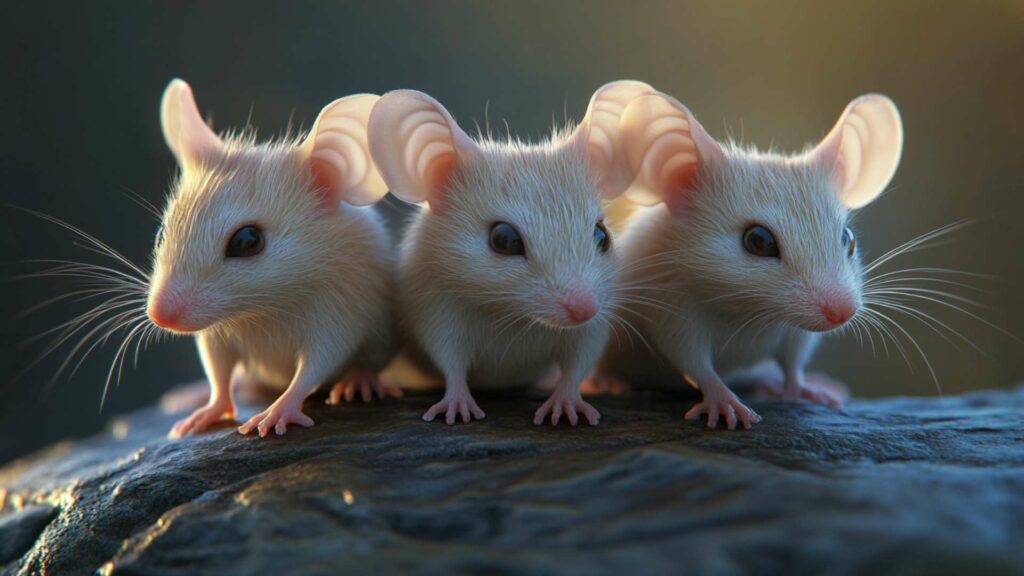
Mice tend to be nocturnal creatures which means they are most active at night when it’s dark outside. That’s when you’re most likely to see them rummaging through your kitchen cabinets or burrowing through your walls in search of something tasty to eat.
When it comes time for a meal, mice usually prefer small frequent meals throughout the day rather than one large meal. This helps them maintain their high metabolism and energy levels.
They have small stomachs and are unable to eat large amounts of food at once. This is why you may notice a mouse nibbling on something for a few seconds before scurrying off to find something else to snack on later.
Mice Reproduction and Life Cycle
Mating Habits: When Mice Get Busy
Mating is a crucial part of the mouse life cycle, and it’s an area that scientists have studied in-depth. When it comes to mice, males tend to be quite competitive, often fighting with each other for access to females.
Observations have shown that males will engage in a type of behavior called “singing” when they are trying to attract mates. Singing is a type of ultrasonic vocalization that sounds like a series of chirps.
The female mice respond by “dancing,” which involves swaying their hips and hind legs and moving their ears while emitting high-pitched vocalizations. This dance is believed to indicate the female mouse’s interest in mating.
Gestation Period and Litter Size: Baby Mice on Board
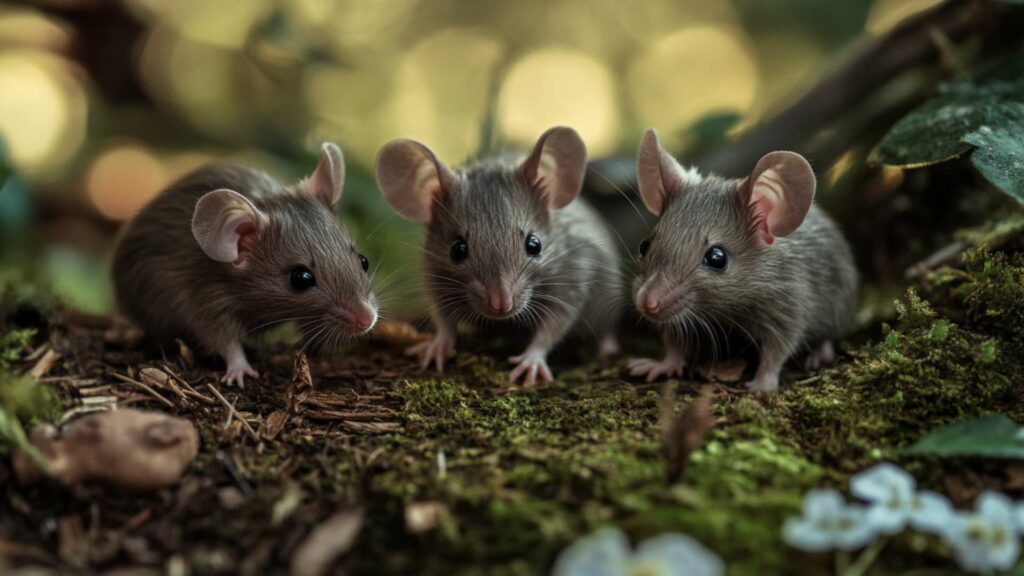
Once mating occurs, female mice undergo a gestation period of about 19-21 days before giving birth. A typical litter size can range from 4-12 babies per litter, depending on the species.
After giving birth, the female house mouse, will carefully nurse her young for around 21 days before they start exploring on their own. During this time, it’s essential to ensure that the female mouse receives adequate nutrition and maintain a healthy diet as she will need extra energy reserves to produce milk for her young ones.
Growth Stages: From Mouse Pups to Adults
As baby mice grow up, they go through several developmental stages before reaching the point of adulthood. In general, mice reach sexual maturity around six weeks after birth. Within just one day of being born, baby mice develop fur and skin pigmentation.
By day three or four after birth, their ears begin unfolding so they can hear sounds around them. Around twelve days after birth, babies have their eyes open for the first time allowing them to see and respond visually for the first time.
By the third week, they start exploring their environment more extensively and begin eating solid food. As they continue to grow, their behavior becomes more complex and sophisticated, reaching peak performance around four to six months of age through the use of a healthy diet.
Environmental Influences on Mouse Behavior
Effects of Temperature
Temperature has a significant impact on mouse behavior. Mice thrive in temperatures ranging from 64-77°F (18-25°C).
They can survive in colder temperatures but may be less active and spend more time near their nests. In warmer temperatures, mice may become more active and seek cooler areas to regulate their body temperature.
In addition to affecting activity levels, temperature can also impact mouse reproduction. Studies show that female mice have an increased litter size and shorter gestation periods in warmer environments, while cooler temperatures can lead to decreased fertility rates and longer gestation periods.
It’s important to consider temperature when setting up mousetraps or attempting to keep mice out of certain areas. Keeping a consistent temperature in the environment can help regulate mouse behavior and prevent them from seeking shelter in unwanted areas.
Effects of Light
Light is another environmental factor that affects mouse behavior. Studies show that mice are most active at night and prefer dark environments during the day for nesting and resting. Bright light can disrupt their circadian rhythm, causing stress and decreased activity levels.
On the other hand, lack of light can also affect mouse behavior negatively. Mice require some light exposure for proper vision development and regulation of their internal clocks.
It’s important to consider lighting when attempting to deter mice and rats from certain areas. Dimming lights or using motion-activated lights can help prevent them from entering unwanted spaces while still allowing them enough light for proper vision.
Effects of Noise
Noise is another environmental factor that greatly affects mouse behavior. Loud noises such as construction or loud music can cause stress on mice, leading to decreased activity levels or even death in extreme cases.
Mice have highly sensitive hearing capabilities which makes them more susceptible to noise disruptions than humans are. Excess noise caused by construction or other activities can lead to increased stress levels, decreased activity levels and can cause mice to seek refuge in quieter areas.
Environmental factors such as temperature, light, and noise greatly affect mouse behavior. Understanding how these factors impact mice can help prevent them from entering unwanted areas and ultimately improve their overall well-being.
Common Mouse Behaviors in the Wild and Domestic Settings
Nest Building
Mice are known for their impressive ability to build nests from materials found in their environment. In the wild, they will use grass, leaves, and twigs to create comfortable, warm homes. In domestic settings, mice may use other materials, such as shredded paper or fabric scraps to create their nests.
Regardless of the location, house mice, will often build their nests in secluded areas such as under bushes or inside walls. It’s fascinating to see how much effort is put into creating these cozy little homes.
Burrowing
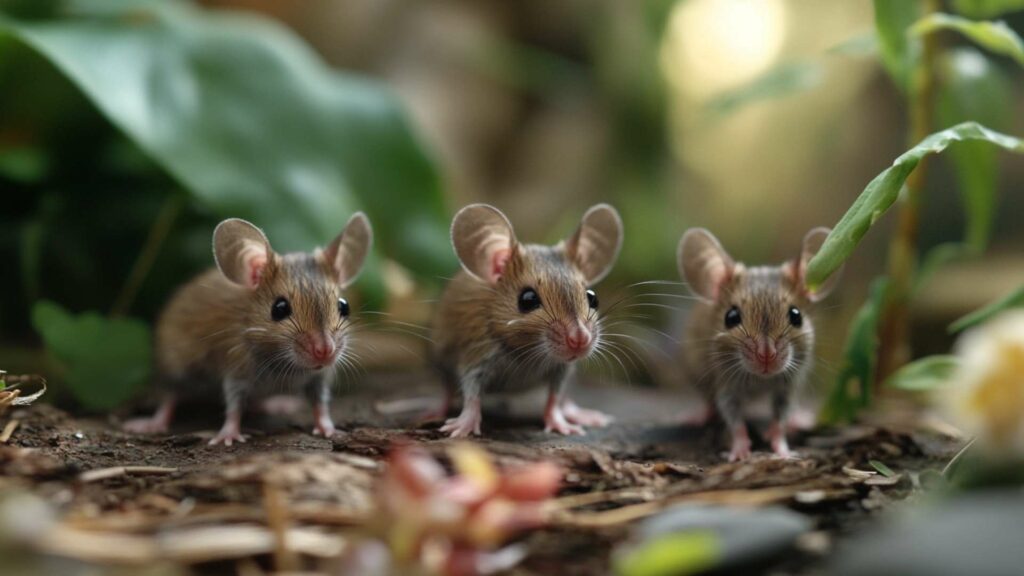
Mice are natural diggers and burrowers. In the wild, they will create intricate tunnels underground that can span over 100 feet!
They will also burrow into snowbanks during the winter months for warmth and protection. Domestic mice will also burrow if given the opportunity.
They have been known to make tunnels through insulation or even chew holes in drywall to create pathways between rooms. This behavior can be destructive if left unchecked but it’s still impressive how skilled these tiny creatures can be.
Exploring
Mice are curious animals by nature and love to explore their surroundings. Wild mice will venture out of their nests at night in search of food and water while domestic mice might explore every nook and cranny of your home looking for anything interesting.
You might see them sneaking around corners or darting across rooms when they think no one is looking. Despite their small size, it’s amazing how bold they can be when it comes to exploring new territory.
Grooming
Like most animals, mice need to groom themselves regularly to stay clean and healthy. They use their front paws like hands to wash their fur using saliva from their teeth and special grooming glands on their faces. In addition to keeping clean, grooming also helps mice regulate their body temperature and stay cool during the summer months.
Mice are meticulous groomers and will spend hours each day making sure they look and feel their best. It’s amazing how much care they put into this essential activity.
Mouse Diseases and Health Issues
Common Diseases that Affect Mice
Just like any other living organism, mice can also suffer from diseases. Some of the common diseases that affect mice include respiratory infections, skin infections, and tumors.
Respiratory infections are caused by a bacterium called Mycoplasma pulmonis, a bacteria which is prevalent in laboratory mice and leads to symptoms such as sneezing, coughing, and difficulty breathing. Skin infections are commonly caused by parasites such as fleas, mites or ticks which can lead to irritation and hair loss on the infected area.
Tumors are also common in older mice because they have a higher risk of developing them due to their genetic predisposition. The most common type of tumor found in mice is lymphoma which affects the lymph nodes and other organs such as the liver or lungs.
Prevention Measures for Keeping Mice Healthy
Preventing diseases in mice involves various measures such as maintaining good hygiene practices, providing nutritious food and proper housing conditions. Cleaning cages regularly with disinfectants helps eliminate bacteria that cause infections while preventing overcrowding ensures minimal spread of respiratory illnesses. Nutritious food options include commercial pellets or a combination of seeds, nuts, grains, fruits or vegetables.
Freshwater should always be readily available for drinking purposes since dehydration can lead to illnesses. In addition to this preventive care routine; monitoring your mouse’s urine and overall health daily will help detect signs of illness early so prompt action can be taken before it worsens their condition.
Mice Health Issues: What’s Next?
As much as there have been significant research studies on mice behavior; more still needs to be done about their health issues. Further research into mouse immunology is necessary for understanding how they respond to certain diseases since they have similar biological systems with humans.
Moreover; vaccine development against some of the common illnesses that affect mice can reduce their susceptibility to these diseases. With continued research, it is possible to develop better ways to prevent and treat mouse health issues and better understand the complex relationship between humans and these fascinating creatures.
Mouse Learning and Memory
Types of learning: habituation, classical conditioning
Learning is a fundamental aspect of mouse behavior. Mice learn from their experiences and use that knowledge to adapt to their environment.
There are two types of learning that have been extensively studied in mice: habituation and classical conditioning. Habituation refers to the process by which an animal decreases its response to a repeated stimulus over time.
For example, if a mouse is repeatedly exposed to a loud noise, it will eventually stop reacting to it. Classical conditioning, on the other hand, involves learning through association between two stimuli.
An example would be if you play a sound before giving your mouse food for several days in a row, then eventually just play the sound without giving them food. The mouse will still react as if they are about to receive food because they have associated the sound with their meal times.
Spatial learning and memory experiments
Another type of learning that has been studied in mice is spatial learning and memory. Mice have an incredible ability to navigate through complex environments using spatial cues such as landmarks, smells, and sounds.
Researchers have conducted many experiments on how mice learn and remember spatial information in order to better understand this behavior. One such experiment involves the Morris water maze task.
In this task, researchers place a mouse in a pool of water with an invisible platform hidden just below the surface. The mouse must use spatial cues around the pool (such as wall location or visual cues) to locate the hidden platform and escape from the water.
Another experiment involves testing mice’s ability to recognize objects based on their surroundings or context—this is referred to as the “spontaneous object recognition” test. Studies show that the hippocampus plays an important role in spatial memory formation among rodents including mice.
The importance of memory research for humans
Understanding how mice learn and remember spatial information has important implications for humans. Many neurological disorders, such as Alzheimer’s disease, impair spatial memory in humans. Therefore, studying how mice learn and remember can help researchers better understand how to treat these conditions.
Furthermore, the study of mouse learning and memory has led to the development of many drugs that enhance cognitive function in humans. For example, many drugs used to treat Alzheimer’s disease have been developed based on research done with mice.
Mouse Navigation and Orientation
Use of Landmarks and Cues for Navigation
Have you ever noticed how mice are able to navigate through complex mazes with ease? Well, it turns out that they rely heavily on landmarks and cues to find their way around a space. For example, mice use visual cues such as walls, corners, and patterns on the floor to memorize their environment.
They also use olfactory cues like scents left by other mice to navigate. In fact, studies have shown that mice are able to remember the location of food sources based on these landmarks even after several weeks.
This ability is crucial for survival in the wild where food sources may be scarce or unpredictable. Mice also have a remarkable ability to discriminate between different odors.
They can identify specific scents associated with food or danger and use this information to navigate through their environment. This helps them avoid predators and find food more efficiently.
Role of the Hippocampus in Spatial Orientation
The hippocampus is a region of the brain that plays a crucial role in spatial orientation. It is responsible for forming cognitive maps which help animals navigate through their environment.
Studies have shown that when the hippocampus is damaged or removed, mice are unable to remember the location of objects or navigate through mazes. In fact, they often exhibit disorientation and confusion when placed in new environments.
Interestingly, studies have also shown that the size of the hippocampus can vary depending on environmental factors such as stress levels and exposure to enriched environments. Mice exposed to enriched environments (with plenty of stimuli) had larger hippocampi compared to those raised in standard laboratory cages.
Understanding how mice navigate their environment is essential for studying their behavior and cognitive abilities. Their reliance on landmarks, olfactory cues, and cognitive maps provides insight into how animals perceive their surroundings and adapt behavior accordingly.
Conclusion
Understanding the behavior of mice is crucial for developing effective control strategies and managing their impact on human health and well-being. By knowing how they communicate, socialize, feed, reproduce, and respond to their environment, we can design better ways to prevent infestations and reduce negative impacts such as damage to crops, property destruction or disease transmission.Learning and memory are fundamental aspects of mouse behavior that have been extensively studied by researchers. Mice have an amazing ability to learn and adapt to their environment using a variety of cues, including spatial information. Studying mouse learning and memory not only further improves our understanding of mice but also opens doors for human therapies benefiting from this knowledge.
Moreover, studying these fascinating creatures has the potential to yield important insights into fundamental biological processes such as gene regulation, development of neural circuits or adaptation to changing environments. For example, recent research has shown that mice have a remarkable capacity for social learning and sharing of knowledge across generations which could help us understand how culture evolves in other animals or humans.
The Future of Mouse Research
Despite significant progress in understanding mouse behavior over the years, there are still many gaps in our knowledge that need to be addressed. For example:
- How do genetic factors influence mouse behavior?
- What are the long-term effects of exposure to environmental pollutants on mouse physiology?
- How do mice develop complex behaviors such as tool use or problem-solving?
Filling these knowledge gaps will require interdisciplinary efforts involving researchers from fields such as genetics, neuroscience, ecology or computer science. It will also require innovative approaches using advanced technologies such as optogenetics (using light to manipulate neural activity) or virtual reality environments which simulate natural habitats.
then – understanding mouse behavior is important not just because we want them out of our homes but because they reveal fascinating things about biological function generally. What’s more – all this research will lead us closer towards animal-friendly pest control measures leaving both humans and mice happier!
Say farewell to rats and mice using D-Termination: the leading pest control service in Las Vegas.

Are you weary of managing rats and mice on your Las Vegas property? D-Termination is the solution you’ve been searching for. Our team of experts excels in eliminating these bothersome rodents, bringing back serenity to your space. Bid adieu to rat and mouse problems by selecting D-Termination for effective pest control today!
Reach out to us at 702-919-6310 or visit dtermination.com to schedule your rodent control service and regain control of your space by evicting unwanted guests.
Frequently Asked Questions:
Normal behaviors for mice include exploring their surroundings, nesting, grooming, and socializing with other mice.
Aggressive behaviors in mice can include biting, chasing, fighting, or territorial displays towards other mice.
Signs of stress in mice can include decreased appetite, excessive grooming, hunched posture, irritability, or excessive hiding.
Mice may run towards humans due to curiosity, seeking food or shelter, or mistaking human scent for a familiar or safe environment.
If you found this article enjoyable, you might also appreciate the following suggestions:
The Secret Life Of Mice: Understanding Their Reproductive Habits And Life Cycle
The Anatomy Of Mice: A Comprehensive Look At Their Physical Characteristics And Features







